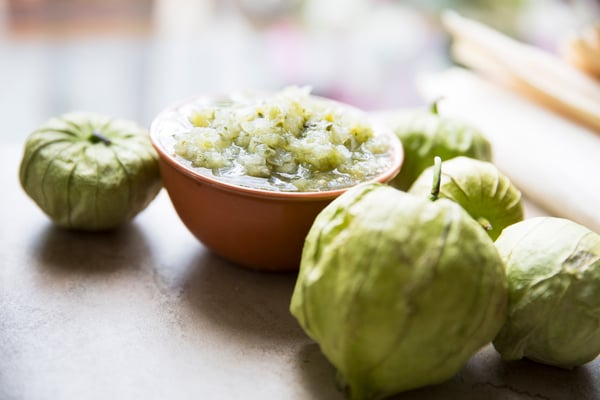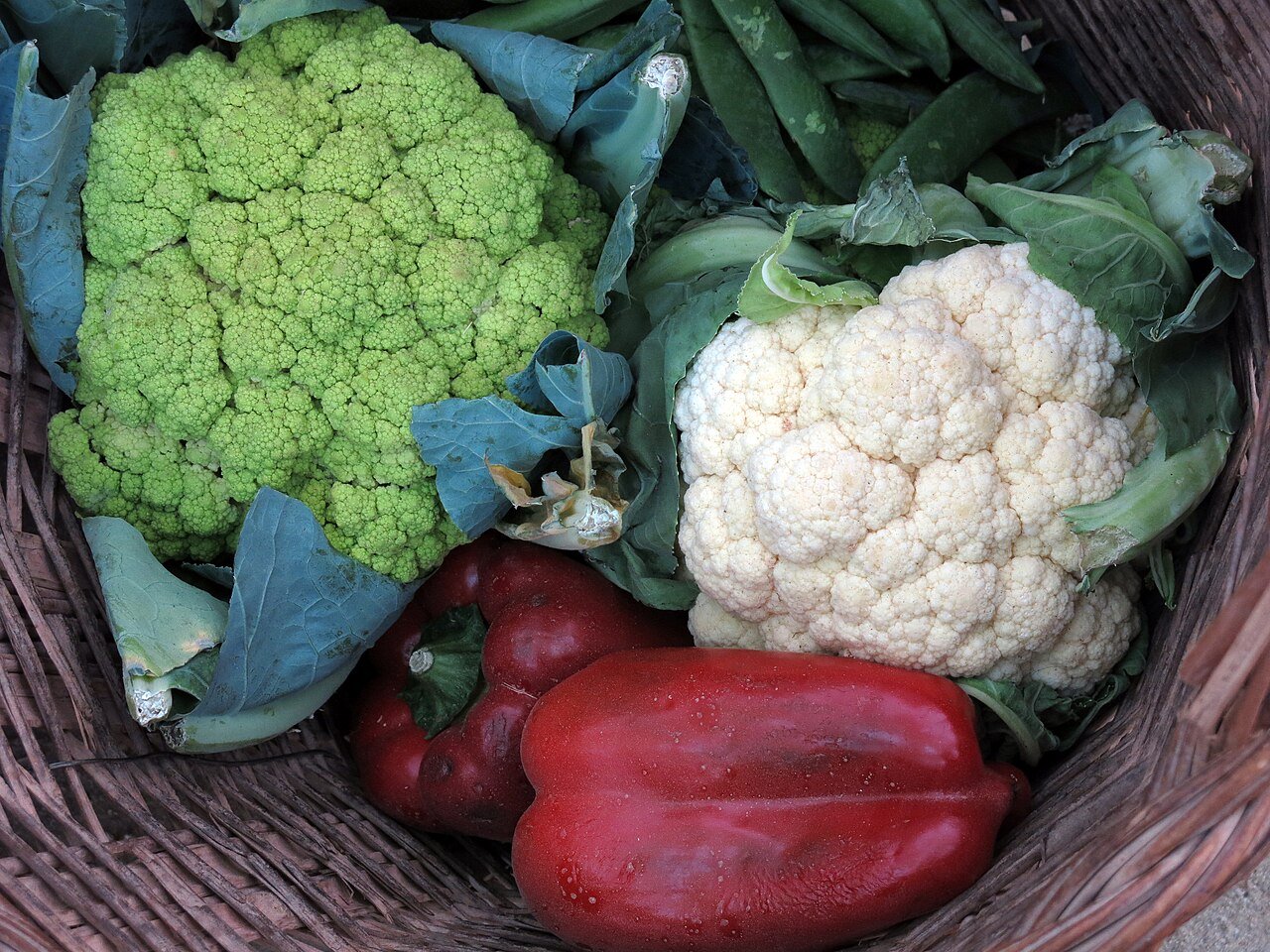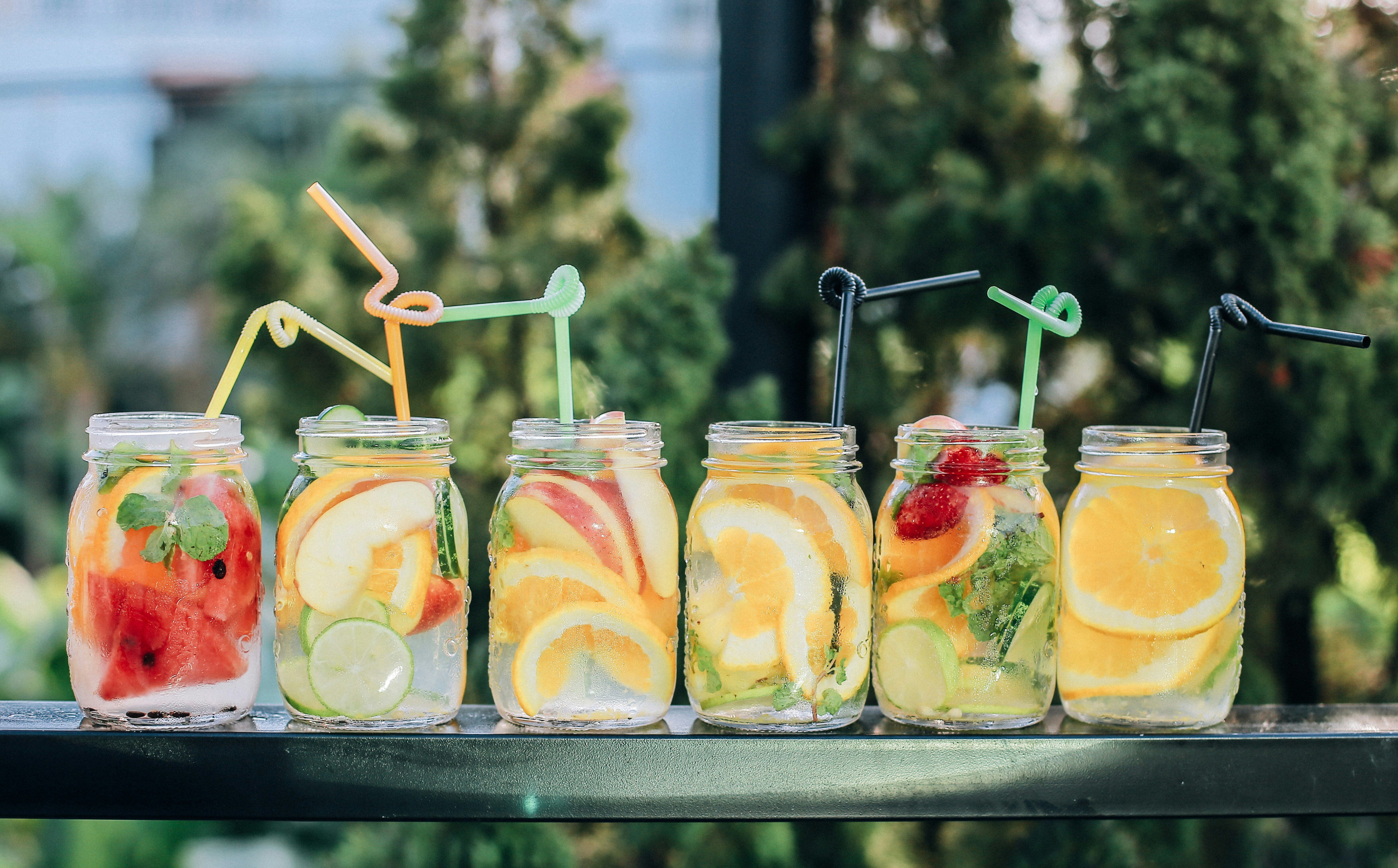Shopping Farmers’ Markets Like a Pro – A Crunch to Tang Dynamic Duo
Summer is officially in full swing. “Eat the rainbow” has a whole new meaning when it comes to the vibrant colors of the fresh summer produce you can find at your local farmers’ markets. Pack a picnic or fire up the grill, and let’s dig into kohlrabi and tomatillos!

Kohlrabi
Kohlrabi is a vegetable in the same family as broccoli, brussels sprouts, and cabbage. It can be eaten in a variety of ways, and even comes in different colors.
Nutrition Facts
Kohlrabi is full of health-promoting vitamins and nutrients like antioxidants and fiber. It’s a great source of vitamin C, an antioxidant that supports your immune system, and prevents damage to your tissues from free radicals that cause diseases like cancer and heart disease. It also has vitamin B6, which helps your body convert food to energy.
How to Store Kohlrabi
Both the leaves and the bulb of a kohlrabi can be eaten and stored. They should each last about a week if stored properly. Wash just before using.
- To store the leaves, trim from the stem and place them in a container with a damp paper towel
- To store the bulb, remove the leaves and stems and place in a container without a paper towel
What to do with Kohlrabi
The leaves of kohlrabi can be eaten raw or cooked, just like other leafy greens such as spinach or kale. Use these deep green leaves raw in salads, or steam or sauté and enjoy as a side dish or as an added ingredient. The bulb of a kohlrabi can also be eaten raw or cooked.
To Roast kohlrabi, peel the outer layer of the bulb. Slice or cube and drizzle with olive oil, salt and pepper. Roast at 400 degrees for 20-25 minutes. Top with optional parmesan cheese and enjoy.
For a fresh kohlrabi salad, add to a mixing bowl:
- 2 kohlrabies – cut into thin matchsticks
- 1 large apple – cut into thin matchsticks
- 2 tbsp lemon juice
- 2 tbsp olive oil
- Lemon zest
- Salt and pepper to taste
Taste Tip: add optional toppings like toasted sunflower seeds, herbs, or gouda cheese.
Mix well and enjoy!

Tomatillos
While tomatillos and tomatoes sound alike and are in the same plant family, tomatillos are related more to ground cherries and gooseberries.
Nutrition Facts
Tomatillos contain vitamin A and C, antioxidants that support overall health. They also contain potassium, an electrolyte that helps your body regulate hydration and blood pressure.
How to Store Tomatillos
Store tomatillos in a paper bag in the refrigerator. They can last for up to two weeks. Remove husks and wash the sticky exterior just before using.
What to do with Tomatillos
Like kohlrabi, tomatillos can also be eaten raw or cooked. Raw tomatillos have a distinct and sour flavor. They can add a flare to salsas, pasta salads, and more. Cooking tomatillos brings out a lemon flavor and can be added to a variety of dishes as well.
For a refreshing Salsa Verde, you will need:
- About 12 tomatillos
- 3-5 cloves of peeled and smashed garlic
- 1 serrano or jalapeño pepper
- ½ white onion
- ½ cup fresh cilantro
- 1 tsp sea salt
- 2 tbsp water
- Ground pepper to taste
Line a baking sheet with aluminum foil. Peel, rinse and cut tomatillos in half. Trim the stem from the pepper, cut lengthwise and remove seeds (if desired, they are hot). Toss the tomatillos and the pepper with the garlic and place them cut side down on a baking sheet. Broil for 5-7 minutes until blistering and blackened. Let cool.
In a blender, add the rest of the ingredients with the cooled tomatillo mixture, and blend to desired consistency. Serve with tortilla chips or use as a sauce for tacos, nachos, burritos, and more! Store in the refrigerator in an airtight container for up to five days.
Enjoy!
Another Option: Farmers Markets aren’t the only place to get fresh produce. You-Pick farms offer a great way to pick your own fresh berries.
Check out Jolivette Family Farms in West Salem, WI and Wold Strawberries in Mable, MN for you-pick berries.
Early to mid-June is strawberry season with blueberries following right behind. Raspberries will be ready in early July.



